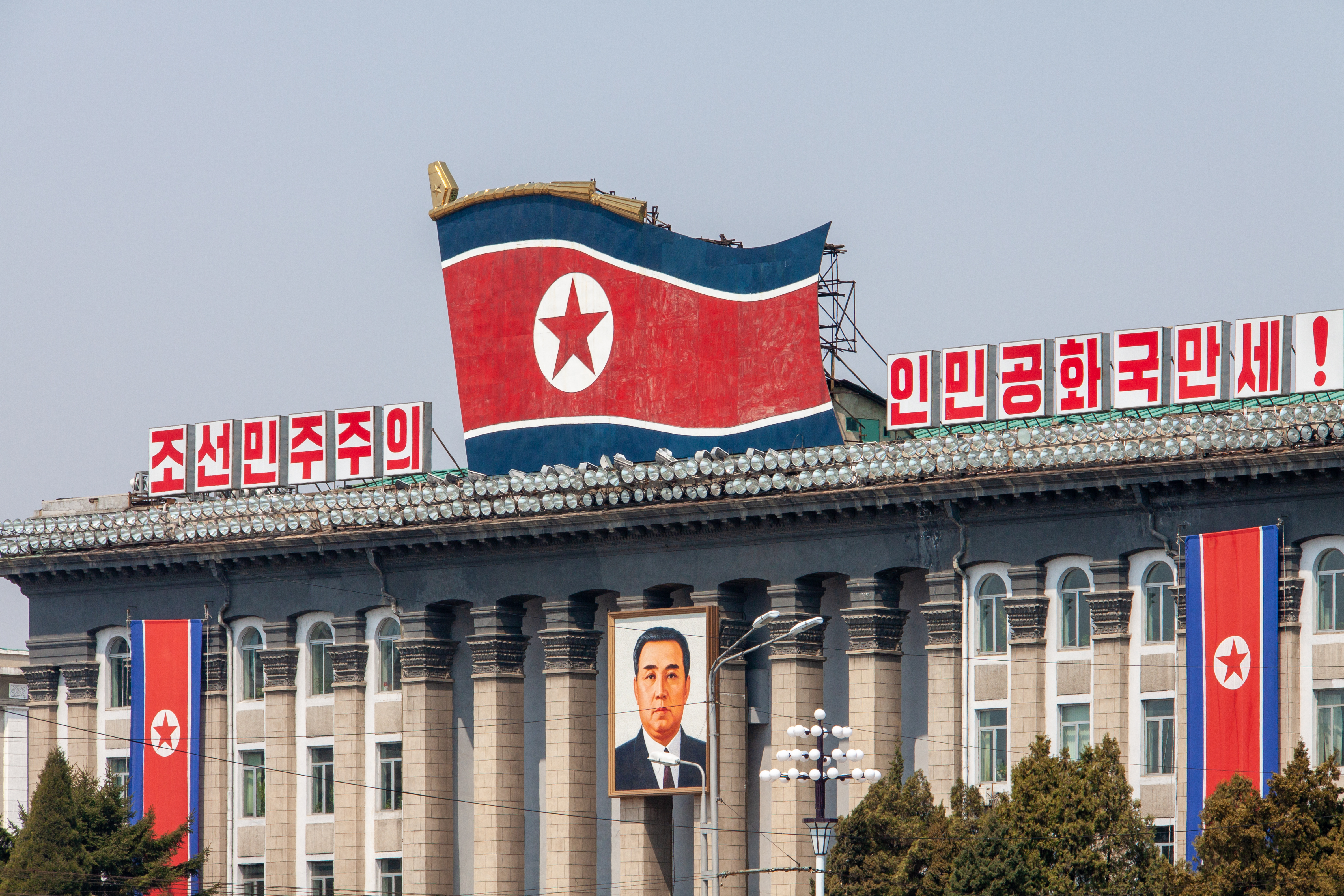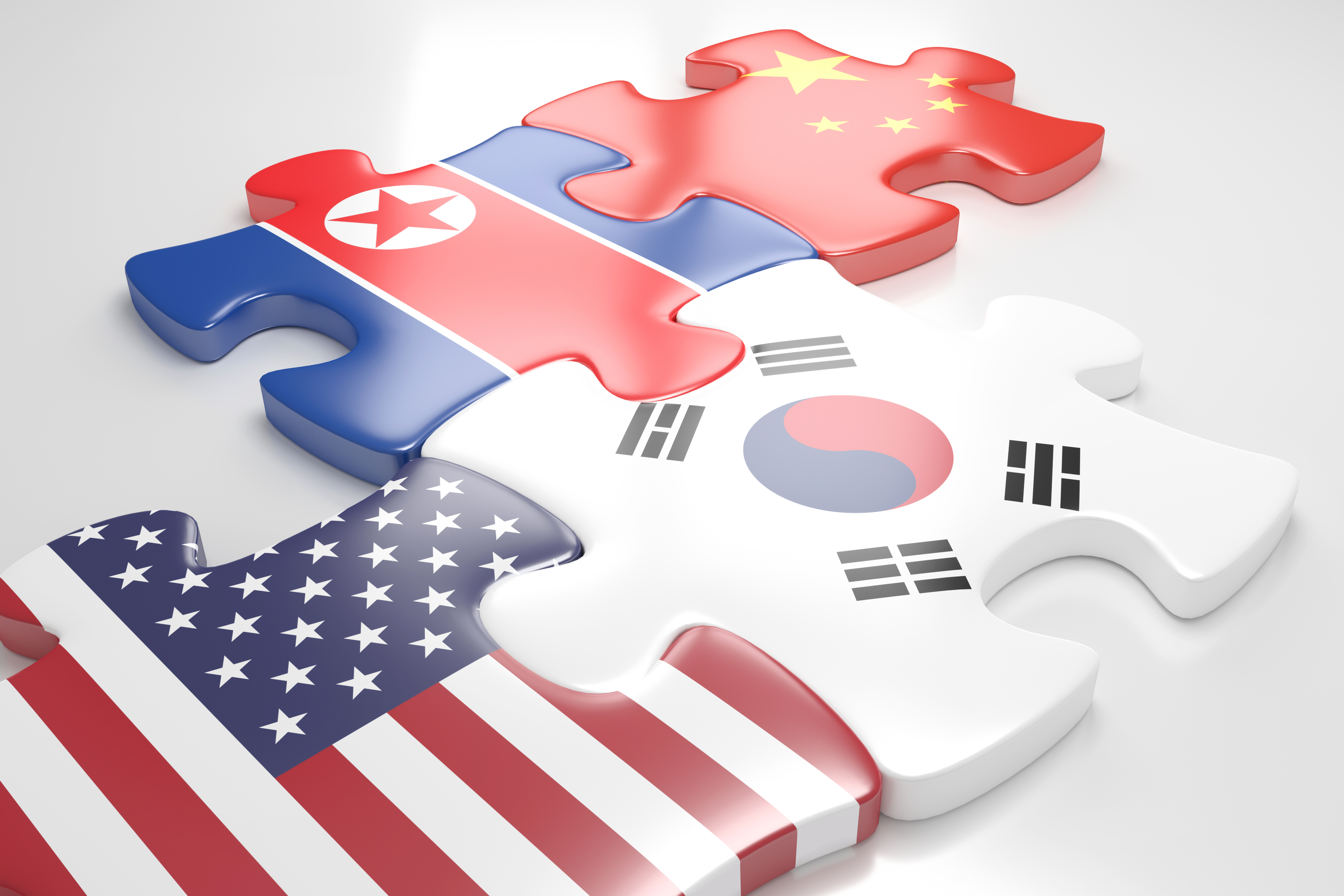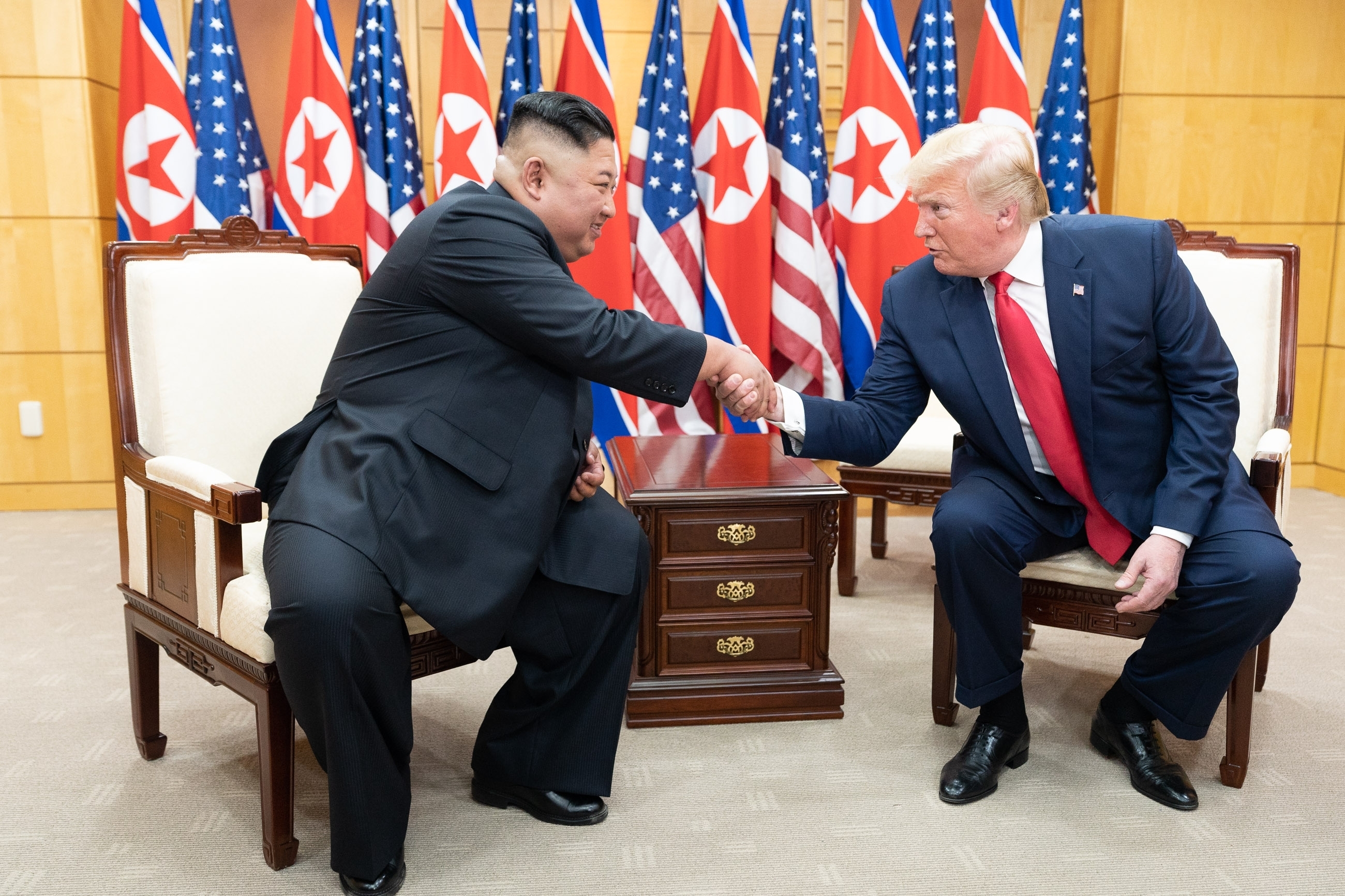■ See Korean Version on EAI Website
Academic Text
I. The Evolution and Limitations of Trumpian Mediation
A core promise of Trump 2.0, evident from the outset of Trump's presidential campaign, was the expeditious resolution of global conflicts, fueled by the desire to restore the material underpinnings of American hegemony through the mitigation of the strategic and economic burdens of U.S. overseas engagements. Yet this strategy of "restraint" unfolded under the paradoxical aim of sustaining U.S. global leadership. The key question remains whether the United States can preserve its influence and deter adversaries while scaling back its international role.
Within the first hundred days of his presidency, Trump made concerted efforts to resolve a range of international disputes. During a May visit to Saudi Arabia, he cited domestic political and economic conditions, while highlighting his diplomatic achievements abroad since taking office. The United States initiated negotiations across several conflict-ridden regions, including Europe, the Middle East, and South Asia. Similar diplomatic initiatives were expected in its policy toward China and the Korean Peninsula.
Throughout his term, Trump sought to cast himself as a "peacemaker," intervening directly and indirectly in global hotspots such as Yemen, India-Pakistan, Iran, Syria, the Israel-Palestine conflict, and the war in Ukraine. These diplomatic moves, particularly those that produced tangible outcomes, were arguably designed to boost his domestic political standing.
As the world's preeminent power, the United States has historically assumed multiple roles—military and diplomatic—when intervening in regional conflicts, with each assumed role varying widely based on the region. Broadly speaking, they can be classified into four categories: stabilizer, balancer, mediator, and broker.
First, the role of a stabilizer refers to the U.S. effort to uphold a rules-based international order and prevent the eruption of conflict, thereby fostering peace and predictability at both regional and global levels. As a stabilizer, the U.S. promotes institutional mechanisms that preserve systemic coherence and support long-term balance and security. This is the most conventional form of global leadership, reinforcing trust in U.S. authority and embedding it within institutional frameworks.
Second, as a balancer, the United States intervenes to prevent the regional domination of any single power. This role seeks to maintain equilibrium among competing actors and prevent imbalances from escalating into conflict. In this capacity, U.S. diplomacy emphasizes conflict mitigation, promotion of cooperation, and multilateral coordination aimed at shared strategic gains.
Third, the mediator is a facilitator of compromise between parties embroiled in disputes. This role assumes neutrality and places emphasis on trust-building, sustained engagement, and long-term peace. Mediation is often considered a normative model of diplomacy, pursued not for direct gain but for the preservation of global stability.
Fourth, the broker connects distant actors—often those without preexisting institutional or strategic ties—by facilitating exchanges of information, resources, and cooperation. Unlike the mediator, the broker emphasizes short-term pragmatism over neutrality or universalism. Often rooted in issue-specific expertise, the broker is primarily motivated by strategic self-interest and transactional benefit.
It is therefore inferable that the United States has never functioned as a monolithic hegemon. Instead, its diplomatic strategies have varied according to geopolitical context and regional interests. These roles are not mutually exclusive; they frequently overlap or shift depending on time and place. Traditionally, U.S. diplomacy has gravitated toward the stabilizer and balancer roles, pursuing structural, long-term peace. However, under the Trump administration, U.S. strategy began to shift more markedly toward that of a mediator, or even a broker.
In conflicts such as those in Yemen, Iran, and Syria, the Trump administration’s twin strategy of coercive force and circumscribed diplomacy reflects a growing orientation toward brokerage diplomacy, driven by a preference for expedient, short-term resolutions. The Yemen case is emblematic. In March 2025, Trump ordered aggressive airstrikes against Houthi forces with the goal of achieving visible diplomatic outcomes within a month. While the strikes caused damage, they failed to significantly degrade Houthi capabilities. On May 6, Trump announced that the Houthis had agreed to halt maritime attacks in the Red Sea, a move he characterized as a “surrender,” and declared a reciprocal cessation of U.S. airstrikes. While this resulted in a conditional pause in hostilities, the Houthis vowed to continue missile and drone attacks against Israel and even claimed victory over the United States. Although short-term maritime safety was achieved, there was no significant shift in Houthi strength or regional stability.
A similar pattern played out in the nuclear negotiations with Iran. In April 2025, after nearly seven years, the Trump administration reopened talks with Tehran but failed to secure a comprehensive deal. The United States sought to curb Iran's potential development of nuclear weapons, yet Iran remained firm on continuing its civilian uranium enrichment and on sustaining support for proxy forces in the region. Rather than reestablishing a broad framework akin to the Joint Comprehensive Plan of Action (JCPOA), the likely outcome became a narrow quid pro quo: temporary suspension of nuclear activities in exchange for limited sanctions relief. Iran clearly regards uranium enrichment and regional influence as strategic levers and shows no intent to compromise. This impasse persists amid pressure from Israel, the threat of renewed sanctions, and a volatile regional security environment.
In Syria, the Trump administration signaled its willingness to lift sanctions following the conclusion of the civil war. During a visit to Saudi Arabia in May 2025, Trump announced the easing of sanctions and initiated normalization talks with Damascus. In response, Syria proposed a package of economic cooperation measures, including natural resource development and postwar reconstruction projects. The United States responded favorably in exchange for sanctions relief. However, these negotiations conspicuously bypassed any substantive engagement with wartime atrocities or mechanisms of accountability, rendering the process vulnerable to criticism as narrowly transactional.
Overall, Trump's second-term Middle East policy ultimately hinges on coercive diplomacy: applying pressure, then offering modest concessions to extract immediate diplomatic gains. This strategy privileges short-term optics over sustainable peace or institutionalized cooperation.
The April 22, 2025 terrorist attack in Indian-administered Kashmir sparked a rapid military escalation between India and Pakistan. The situation escalated from local skirmishes to reciprocal missile strikes, raising fears of nuclear confrontation between the two nuclear-armed states. Initially, Trump maintained a posture of detachment, framing the conflict as a regional issue irrelevant to U.S. interests. However, when Pakistan officially raised the prospect of nuclear use, Trump intervened diplomatically. The result was a ceasefire agreement, which Trump lauded as a testament to American mediation.
While Pakistan welcomed U.S. involvement in the ceasefire process, India minimized external influence, portraying the agreement as the outcome of direct bilateral engagement. Nevertheless, intermittent skirmishes persisted along the border, and core sources of friction—ranging from trade imbalances and terrorism to the contested status of Kashmir—remained unresolved. Prime Minister Modi's characterization of retaliatory strikes against Pakistani terrorism as the "new normal" further demonstrated the ceasefire's tenuous nature.
Trump also proclaimed an intent to swiftly terminate the war in Gaza; however, the conflict soon devolved into a protracted stalemate. His controversial proposal to turn Gaza into a U.S.-administered luxury resort provoked immediate backlash, with critics denouncing it as tantamount to ethnic cleansing and a violation of international law. While the administration framed the plan as a pragmatic peace initiative focused on disarmament, reconstruction, and infrastructure development, its feasibility and legitimacy were widely questioned by regional actors and the international community.
As a result, U.S.-Israel relations deteriorated, and Washington's credibility as a neutral mediator in the Middle East further declined. Trump's pitch for Gaza came to represent both a form of realist pragmatism and a narrow, U.S.-centric misreading of complex regional dynamics. More broadly, diplomacy across the Middle East remained stagnant, revealing the limitations of American influence in an increasingly complex geopolitical landscape.
Trump's security strategy reveals several fundamental shortcomings. First, while the United States may initiate negotiations through coercive leverage or crisis inducement, these efforts often yield only short-lived results and may contribute to long-term instability. Second, the administration's approach tended to overlook deeper structural issues, instead focusing on limited, easily framed objectives. Third, even when the U.S. succeeded in facilitating ceasefires or dialogue, it frequently failed to provide the institutional guarantees or enforcement mechanisms necessary for sustainable outcomes. Fourth, when the interests of U.S. allies were involved, American strategic commitments appeared inconsistent, as the administration often prioritized immediate political gains over durable regional order. Finally, Trump's diplomatic initiatives frequently seemed driven more by domestic political incentives than by a coherent vision for conflict resolution, a perception that further undermined the legitimacy of the negotiation process and its outcomes.
II. Prospects and Preconditions for a U.S.-North Korea Summit
The Trump administration consistently sought to expedite the resolution of regional conflicts in order to minimize the burden of U.S. resource commitments abroad. Should tensions in Europe, the Middle East, and South Asia recede, unresolved challenges in East Asia are likely to assume greater salience. As the primary theater of U.S.-China strategic competition, East Asia presents heightened sensitivities in which any regional development bears directly on core American interests. The security situation on the Korean Peninsula, including inter-Korean relations and the North Korean nuclear issue, remains central not only for the defense of South Korea, a key U.S. ally, but also for broader concerns such as U.S.-China power recalibration and the preservation of the global nuclear nonproliferation regime.
Given Trump's track record in international mediation, the outcome of any future U.S.-North Korea summit remains highly uncertain. It is unclear whether such a summit would meaningfully address the structural causes underlying the nuclear issue or engage with North Korea's evolving strategic posture within the Northeast Asian security architecture, including its trilateral coordination with China and Russia. More importantly, any summit would need to transcend the limitations of previous engagements, including Trump's tendency to prioritize domestic political gain, his preference for transactional diplomacy over long-term strategy, his ambiguous commitment to allied interests, and his pursuit of narrowly scoped, rapidly concluded deals at the expense of structural resolution.
While the nominal objective of such a summit would be North Korea's complete denuclearization, any meaningful negotiation would necessarily intersect with a broader web of interrelated issues. These include security guarantees for Pyongyang, military confidence-building measures between the two Koreas, the relaxation of economic sanctions, steps toward the normalization of North Korea's international status, the creation of a sustainable framework for international engagement, and efforts to ensure that Pyongyang's growing alignment with China and Russia does not further destabilize the region.
However, given the administration's diplomatic track record, forthcoming negotiations are likely to prioritize economic concessions, even if couched in the rhetoric of denuclearization. A pertinent precedent is the recent mineral agreement between the United States and Ukraine. Though ostensibly commercial, that agreement has come to be regarded as a comprehensive model of economic-security partnership. It upheld Ukrainian resource sovereignty, while enabling U.S. investment, technology transfer, market access, and strategic cooperation. This approach has been promoted as a template for recalibrating global supply chains, mitigating geopolitical risk, and enhancing the economic resilience of U.S. partners.
It is worth considering—albeit cautiously—whether a similar model could be adapted to the North Korean context. Since assuming power, Kim Jong Un has repeatedly emphasized economic development and improved living standards as central goals. Pyongyang has, at various points, sought to attract foreign investment and secure hard currency inflows. Within this context, its extensive untapped mineral reserves, the proposed development of the Wonsan-Mt. Kumgang International Tourist Zone, large-scale infrastructure projects, and designated industrial zones may constitute plausible economic incentives in future negotiations. Historical precedents—including the Kaesong Industrial Region, the Mt. Kumgang tourism initiative, and the Masikryong Ski Resort—indicate that economic cooperation is not antithetical to the regime's long-term strategic calculus.
Still, such a strategy requires several key conditions. First, international sanctions would need to be relaxed, or at least selectively suspended, to allow for targeted economic engagement. Second, credible institutional safeguards must be established to protect foreign investments and ensure the repatriation of capital. Third, the creation of a multilateral or internationally backed framework would be essential to oversee implementation, enforce transparency standards, and manage project execution.
Despite these possibilities, formidable challenges are still in place. Chief among them is the provision of credible security guarantees. While the U.S.-Ukraine agreement referenced economic security, it ultimately lacked enforceable provisions of that kind. In the North Korean case, even robust economic engagement would likely fail to mitigate Pyongyang's fundamental security concerns. Furthermore, the introduction of foreign business operations may conflict with the regime's deeply embedded system of political and economic control.
Since the collapse of the Hanoi summit, North Korea has advanced a maximalist strategy aimed at acquiring capabilities to directly threaten the U.S. mainland. Its current trajectory indicates a concerted push to establish credible second-strike capability as the cornerstone of its deterrence posture. Without proportionate concessions from Washington, any future summit is likely to produce marginal outcomes. Moreover, as long as Pyongyang retains access to Russian military technology and limited but sustained economic support from both Russia and China, it is unlikely to regard engagement with the United States as vital to regime survival.
Finally, the regime has historically viewed external monitoring, conditional funding, and restrictions on resource use as violations of its sovereignty. For any economically driven engagement strategy to succeed, it must navigate a complex set of variables, including the resilience of sanctions, the degree of mutual political trust, and the presence of enforceable oversight mechanisms.
III. Fallout from Negotiation Failure and South Korea's Strategic Response
Although a future U.S.-North Korea summit may provide a forum to address not only the nuclear question but also broader strategic concerns, the repercussions of another failed attempt would likely be far more consequential than prior disappointments. Chief among them is the intensification of already widespread skepticism surrounding Pyongyang's commitment to denuclearization. North Korea would likely attribute the collapse of negotiations to Washington, using the outcome to justify the normalization of its nuclear status and to seek tacit or overt recognition from the international community. In the aftermath, Pyongyang may accelerate the development of its nuclear arsenal and pursue further transfers of advanced military technology from Russia.
Should North Korea resume high-intensity provocations, such as nuclear tests or intercontinental ballistic missile launches, the security environment across the Korean Peninsula and Northeast Asia would likely become increasingly volatile. These actions appear consistent with Pyongyang's broader trajectory toward securing full-spectrum deterrence, including the capability to strike the U.S. mainland and the establishment of a credible second-strike posture.
A failed negotiation could also unravel the already tenuous international coalition committed to North Korea's denuclearization. In such a scenario, Pyongyang may seek explicit recognition as a nuclear state from China and Russia. These actors, in turn, could exploit the diplomatic stalemate to challenge the strategies of South Korea, the United States, and their regional partners. This would further erode Washington's diplomatic leverage and increase pressure on the existing UN-led sanctions regime.
Another critical risk lies in the potential misalignment between Washington and Seoul. If a summit proceeds without close consultation or synchronized strategy, the ramifications could extend to the broader U.S.-ROK alliance. Any enduring resolution of the North Korean nuclear issue requires a deeply coordinated bilateral approach. If the United States pursues a narrowly transactional, short-term engagement divorced from alliance considerations, it risks imposing collateral strain on the partnership with South Korea.
The collapse of summit diplomacy would also exacerbate the structural security dilemma on the Peninsula. Opportunities for inter-Korean engagement, a formal peace regime, or eventual reunification would recede further. In response to renewed provocations, trilateral security cooperation among the United States, South Korea, and Japan would likely be reinforced, while North Korea could deepen its military and strategic partnerships with China and Russia. This dynamic would risk re-entrenching a bipolar regional order, characterized by arms racing and ideological polarization.
In anticipation of such outcomes, South Korea's strategic posture must be both proactive and multidimensional. Foremost, Seoul must articulate a durable and granular roadmap with Washington for managing the North Korean nuclear issue. In light of the Trump administration's broker-style diplomacy, which privileges discrete, high-visibility achievements over sustained strategic coherence, there is a tangible risk of allied coordination being relegated to the sidelines. South Korea should therefore advocate for a comprehensive framework that goes beyond denuclearization to address the Peninsula's entrenched structural and political dynamics. While a successful summit would be welcomed, enduring strategic alignment remains paramount. Accordingly, Seoul must proactively devise contingency strategies to hedge against the episodic and transactional nature of Trump-era diplomacy.
Most importantly, the maintenance of a robust deterrent posture remains paramount. As strategic rivalry between the United States and China intensifies, questions concerning the flexibility and future role of U.S. Forces Korea are gaining urgency. The incoming South Korean administration must safeguard the integrity of its defense and deterrence posture in the face of fluid alliance configurations and a transforming geopolitical landscape. ■
■ Chaesung CHUN is Chair of EAI’s National Security Research Center and Professor at Seoul National University.
■ Translated and edited by Chaerin KIM, Research Assistant
For inquiries: 02 2277 1683 (ext. 208) | crkim@eai.or.kr




